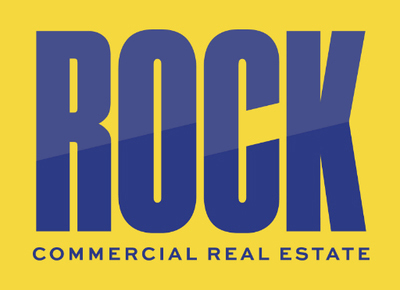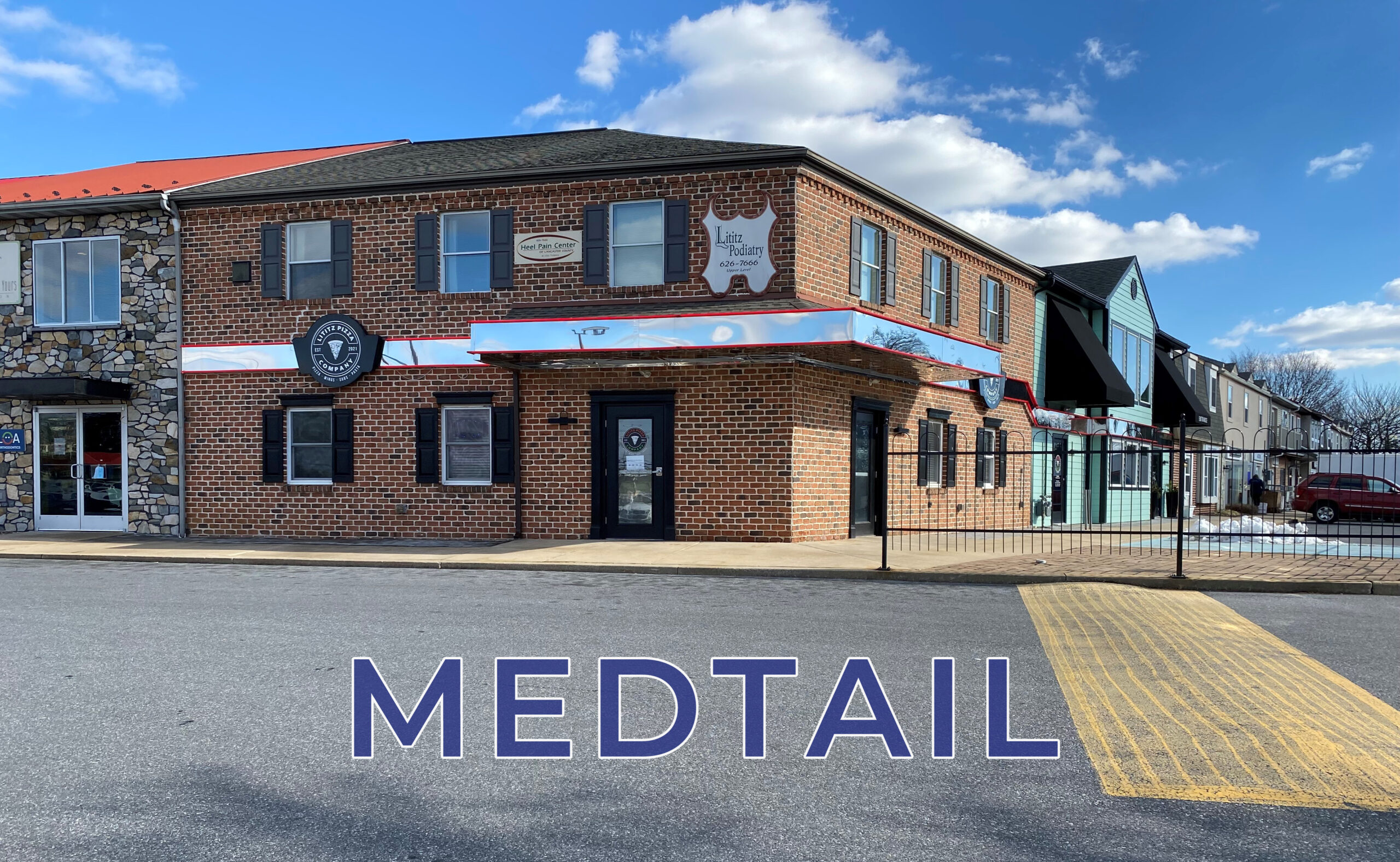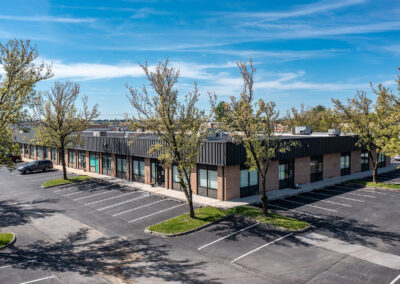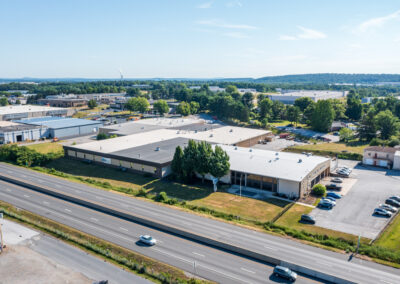by Katie Spurrier | 6 min. read
According to a recent article in The New York Times, the next time you visit the doctor or dentist you may be doing so in a space formerly occupied by a retailer.1 Health care providers are establishing their practices in storefronts, malls, and shopping centers. In fact, research from CoStar Group indicated about 20 percent of leased medical space is in retail buildings which is an increase from about 16 percent 12 years ago in 2010.1 Another survey conducted by ICSC, a trade group representing owners of these properties, found in 2020 almost 7 in 10 adults in the United States were visiting a health care provider in a shopping center, indoor mall, or outdoor strip mall.1 This emerging trend is known as medtail – properties that currently offer medical services in a traditionally retail setting. Examples include “doc-in-the-box” facilities or urgent cares that bridge the gap between a visit to a primary care physician and a visit to a hospital emergency room. These medtail properties tend to be where people live and shop, and they employ marketing strategies commonly used by retailers.
Several factors have contributed to the medtail trend. Due to the COVID-19 pandemic, many retailers gave up on brick-and-mortar facilities and focused on moving their inventory online.2 This increased retail vacancy was referenced in ROCK’s 2020 Market Reports, when retail vacancy in York County hovered around 8% during Quarters 2, 3, and 4. With the pandemic decreasing retail rents and adding vacancies, new opportunities emerged in this sector.1 Medical facilities leasing retail spaces benefitted both tenants and landlords. Tenants gained access to high visibility sites and increased consumer foot-traffic while landlords knew healthcare providers normally bring employed, insured patients increasing spending at surrounding retailers and attracting higher profile clients to other portfolio properties. Landlords were eager for medical tenants that are normally long term and unaffected by economic downturns. Medical tenants also have a higher success rate than restaurants and other retailers.
"In 2020, almost 7 in 10 adults in the United States were visiting a health care provider in a shopping center, indoor mall, or outdoor strip mall."
The pandemic also changed how people work and what medical facilities they choose to visit. Many of these facilities appeared at a time people felt uneasy about going to the hospital. For some, going into a retail environment closer to home felt safer, more convenient, newer and cleaner.1 The pandemic also increased the number of remote workers. In major cities like New York, this meant when people were sick, they weren’t visiting a medical provider close to their office in Midtown. Instead, they were more inclined to use an urgent care in a retail shopping center near their home in Brooklyn.2 In our local market, office vacancy has continued to drop since 2020 and is currently around 2.7%. There is very minimal new office construction. ROCK Managing Partner David Bode, CCIM, SIOR, believes low office vacancy has encouraged the medtail trend stating, “The evolution of medical transitioning into available retail facilities makes sense, especially with the very low vacancy rate in the office market. Medtail tenants receive the added benefits of better visibility, higher traffic counts, and moving into areas with greater concentration of residents.”
Some experts also believe generational trends have impacted the medtail market. Baby Boomers, one of the largest generations in United States’ history, are aging and requiring more convenient medical care. This is a classic example of supply and demand. Additionally, experts have noted Millennials are more accustomed to a consumer-oriented, retail experience. They appreciate modern facilities and consistent branding and are more likely to visit medical offices with these features.2 Millennials may also be drawn to the trend of repurposing existing structures, in this case renovating existing retail space for medical tenant needs which ultimately reduces environmental impact.1
"The evolution of medical transitioning into available retail facilities makes sense, especially with the very low vacancy rate in the office market," commented ROCK Managing Partner, David Bode, CCIM, SIOR. "Medtail tenants receive the added benefits of better visibility, higher traffic counts, and moving into areas with greater concentration of residents."
LOCAL EXAMPLES OF MEDTAIL
- Queensgate Towne Center 2801 Springwood Road, York, PA 17403: Suites 2003-2005, about 30,000 SF, were leased by WellSpan Health Services, Inc. in March 2022. The space was formerly a Habitat for Humanity ReStore location. WellSpan now uses this facility for rehabilitation services including oncology care, lymphedema program, neurological rehab, occupational therapy, orthopedic rehab, physical therapy, speech language therapy, and sports medicine.4
- Millersville Commons 341-369 Comet Drive, Millersville, PA 17551: Exeter Orthodontics signed a 5-year lease for Suite 369, about 2,000 SF of space, in this retail strip center in January 2022.4
- Cloister Shopping Center 95-130 North Reading Road, Ephrata, PA 17522: Drayer Physical Therapy leased Suite 4, about 1,700 SF of space, in this shopping center in December 2021.
- 15-43 Cinema Drive, York, PA 17402: White Rose Family Dental, LLC leased Suite 5, about 1,900 SF of space, in this shopping center in April 2022.5 CPRS Physical Therapy occupies a neighboring space.
- ROCK-managed Warwick Center 10-60 Copperfield Circle, Lititz, PA 17543: This retail shopping center has spaces leased by medical tenants including a podiatrist, an orthodontist, and a dentist.
- 150 Eastbrook Road, Ronks, PA 17526: Formerly the home of Good ‘N Plenty restaurant, this 8.5 acre property was purchased by Well Spring Care, Inc. for $2.9 million in August 2022. Renovation plans will convert the structure to a 24/7 medical clinic for the Amish community.
NATIONAL EXAMPLES OF MEDTAIL
- In 2021, CVS Pharmacy announced the closure of about 900 locations in favor of transitioning many existing sites into HealthHUBs – a retail business model devoted to primary care.3
- In 2022, Walgreens announced plans to increase their investment in a primary care company called VillageMD.3
- In 2019, Walmart began expanding their Walmart Health Centers which offer many services like primary care, imaging, labs, dental, optometry, and counseling. Their current branding as a discount retailer is also adding value to their medtail expansion.3
- The University of Rochester in upstate New York is creating a 350,000 SF ambulatory orthopedic facility at the Marketplace Mall in Henrietta. The property was built in 1982 and once had 4 anchor tenants including a Sears store that closed in 2019. The mall was 30% vacant before the $227 million project began.1
As the medtail trend increases in popularity, both landlords and tenants will have to adapt. Normally, landlords want to avoid upfront capital and attract tenants looking for long leases. However, medtail tenants are seeking turnkey spaces with shorter leases. Landlords also want triple net leases, but medtail tenants often prefer a modified gross agreement or a full-service agreement so they can keep reconciliation costs within the rent and avoid overextending their property management duties. Some commercial real estate experts believe medtail tenants will have to learn to embrace the triple net lease. Mark Chrisman, Director of Henderson Health Care, notes “No one has a defined roadmap to success in the medtail world.”6 Since medtail is here to stay, the coming years will inform commercial real estate consultants how to best represent landlords and tenants in these transactions.
SOURCES
1 Margolies, Jane. (2022, February 22). To Fill Empty Retail Space, Landlords Tap Doctors and Dentists. Retrieved from https://www.nytimes.com/2022/02/22/business/real-estate-retail-space.html.
2 Mallon, Nathaniel. (2022, July 22). The Rise of Medtail: Medical and Healthcare Tenants Occupying Ground-Floor Leases. Retrieved from https://rew-online.com/the-rise-of-medtail-medical-and-healthcare-tenants-occupying-ground-floor-leases/.
3 Snelling, Brin. (2022, February 7). Why Healthcare Is Key To The Future Of Physical Retail. Retrieved from https://www.forbes.com/sites/brinsnelling/2022/02/07/why-healthcare-is-key-to-the-future-of-physical-retail/?sh=2a2b6b4219e2.
4 Urie, Daniel. (2022, January 24). Wellspan, Sheetz, Starbucks and 43 Other Real Estate Deals in Central Pa. Retrieved from https://www.pennlive.com/news/2022/01/wellspan-sheetz-starbucks-and-43-other-real-estate-deals-in-central-pa.html.
5 Urie, Daniel. (2022, April 19). Former Hospital to Become Apartments and 40 Other Central Pa. Real Estate Transactions You Should Know About. Retrieved from https://www.pennlive.com/news/2022/04/former-hospital-to-become-apartments-and-40-other-central-pa-real-estate-transactions-you-should-know-about.html.
6 Beeton, Joe. (2021, March 23). ‘Medtail:’ A Remedy for Retail Real Estate Vacancies, an RX for Better Branding and a Cure for Inconvenience. Retrieved from https://www.loopnet.com/learn/medtail-a-remedy-for-retail-real-estate-vacancies-an-rx-for-better-branding-and-a-cure-for-inconvenience/917158006/.






